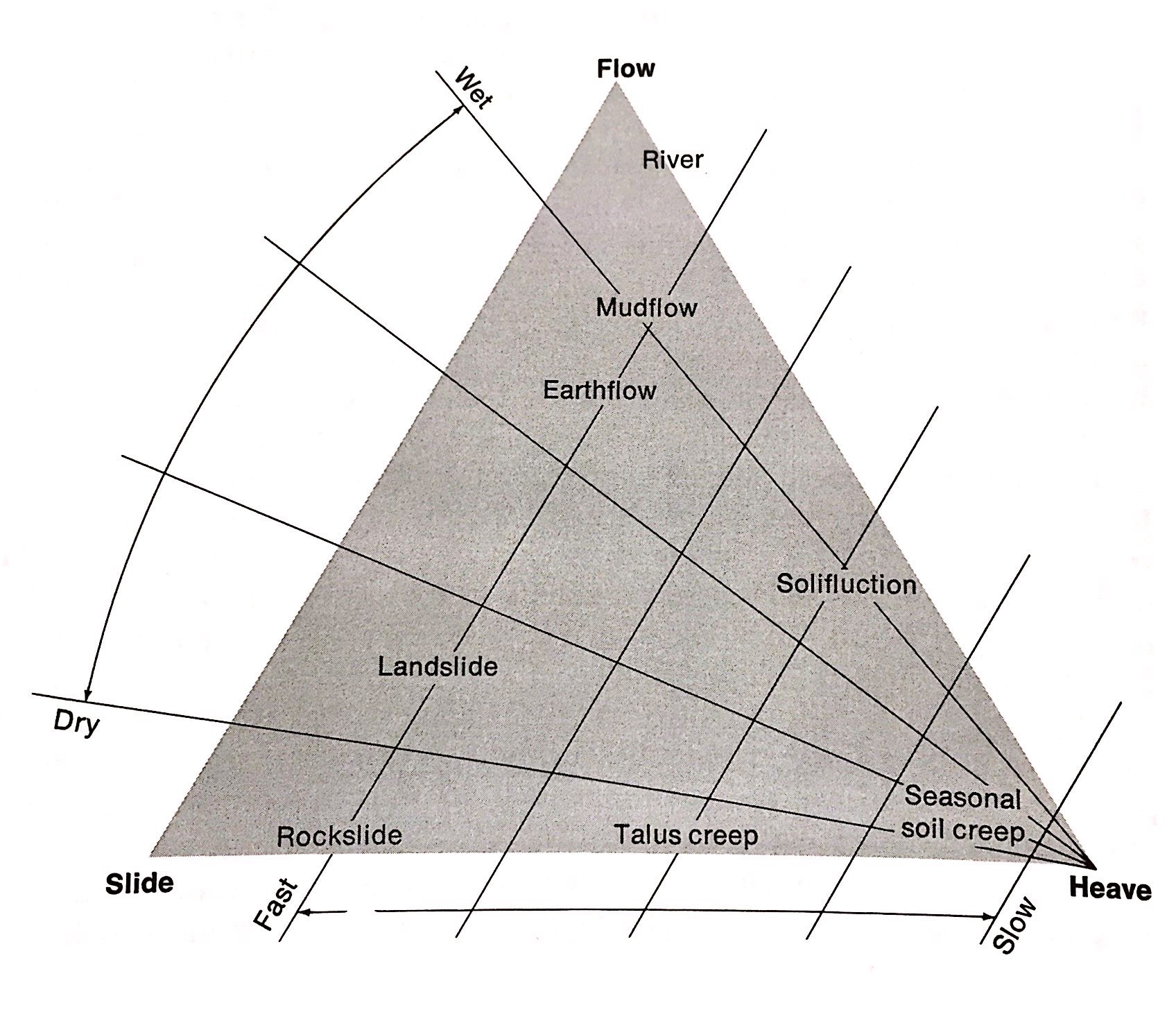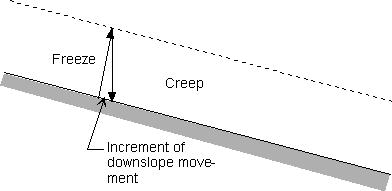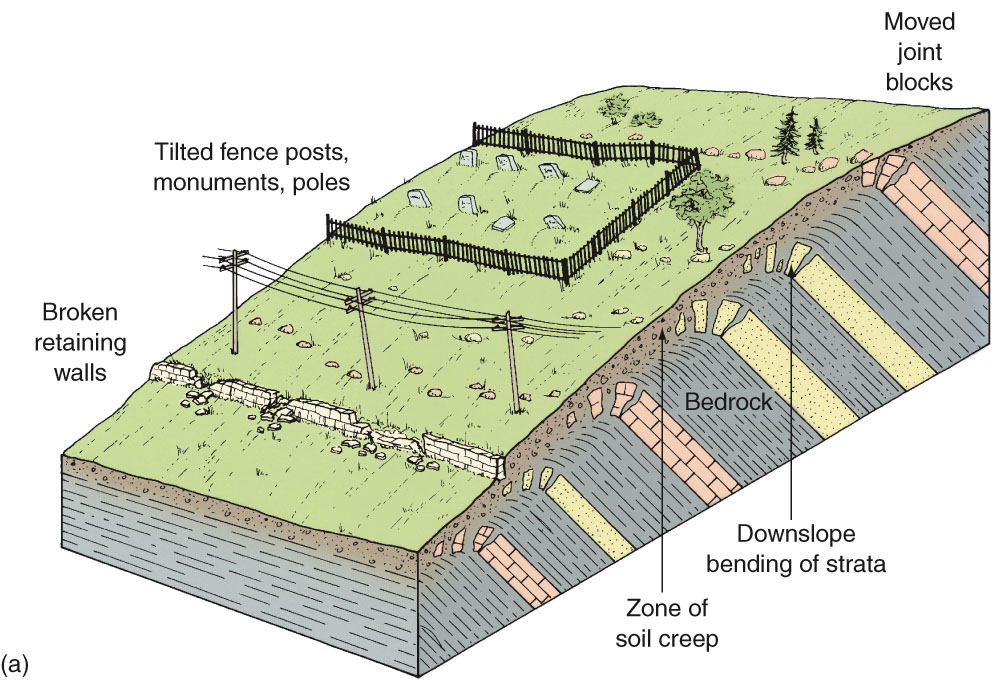Types of Mass Movement
Mass movements can be subdivided into three main types: slides, flows, and heaves. Within these three types, there exist a variety of subtypes, such as earthflows and mudflows, which are based on the speed and moisture content of the mass movement.
 |
| Graphic depicting types of mass
movement in relation to their speed and moisture
content. Image Source: Ritter, Dale F., Process Geomorphology. Waveland Press, Inc., 2011 |
Slides occur when cohesive pieces of material slide along a clearly delineated surface, with no internal deformation occurring within the sliding pieces. One example of a slide type mass movement would be the Pretty Rocks Landslide along the Denali Park Road in Denali National Park. Slides are very common in this area, as a result of the steep slopes and a local volcanic ash clay layer in the earth that commonly serves as a failure plane along which these debris slides occur. These slides are very problematic for the park service, because they pose a great threat to infrastructure, specifically the park road.
 |
| Image of the Pretty Rocks Landslide Image Source: https://www.nps.gov/dena/learn/nature/landslides/htm |
Unlike slides, flows occur when material does not move along a clear failure plane, but rather moves through internal shearing as a result of water saturation decreasing the internal friction of the material. So while slides can be quite dry, flows are a categorically wet type of mass movement. Mudflows are also particularly dangerous to humans because of the speed with which they occur, often accompanying flash floods or volcanic eruptions, which can create a type of mudflow known as a lahar.
 |
| An image of a mudflow in Montecito,
California that occured following heavy rainfall. Image Source: http://blogs.discovermagazine.com/rockyplanet/2018/01/12/mudflows-devastate-parts-of-southern-california/#.W_XVe7bMxp8 |
The final variety of mass movement is the heave. Heaving is an incredibly gradual type of movement that is a result of expansion and contraction of unconsolidated material (often related to freeze thaw processes) causing a net downslope displacement of the particles as a result of the force of gravity.
 |
| An image depicting how freeze thaw
allows heaving (labelled here as creep). Image source: http://www.public.asu.edu/~arrows/geomorph/masswasting/glg362--masswasting.html |
The lack of a mechanism driving lateral movement (such as the presence of water, as in the case of flows) is what causes this particular type of mass movement to occur so slowly.
 |
| An image depicting what heaving looks
like. Image source: http://www.geogrify.net/GEO1/Lectures/Weathering/MassWasting.html |